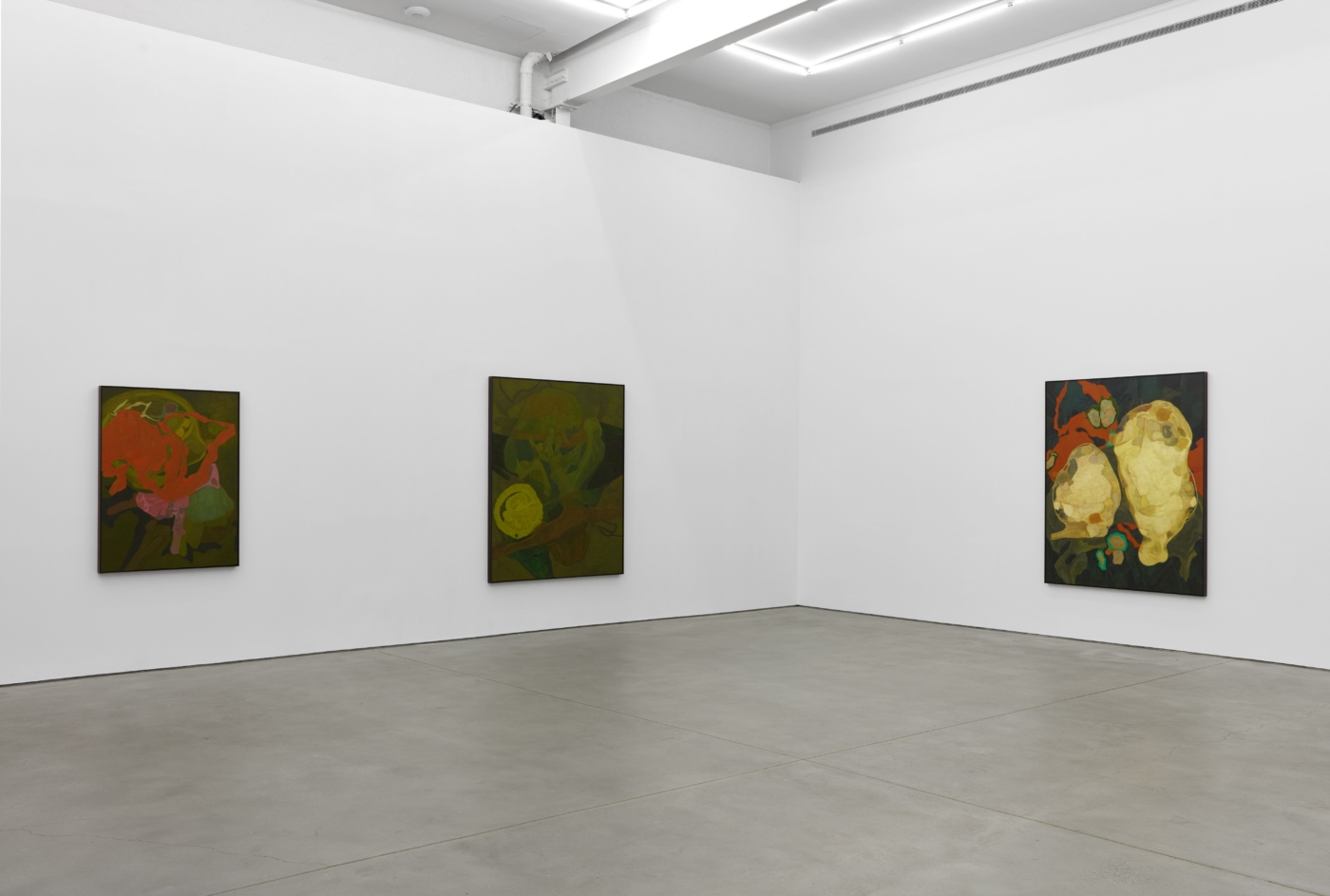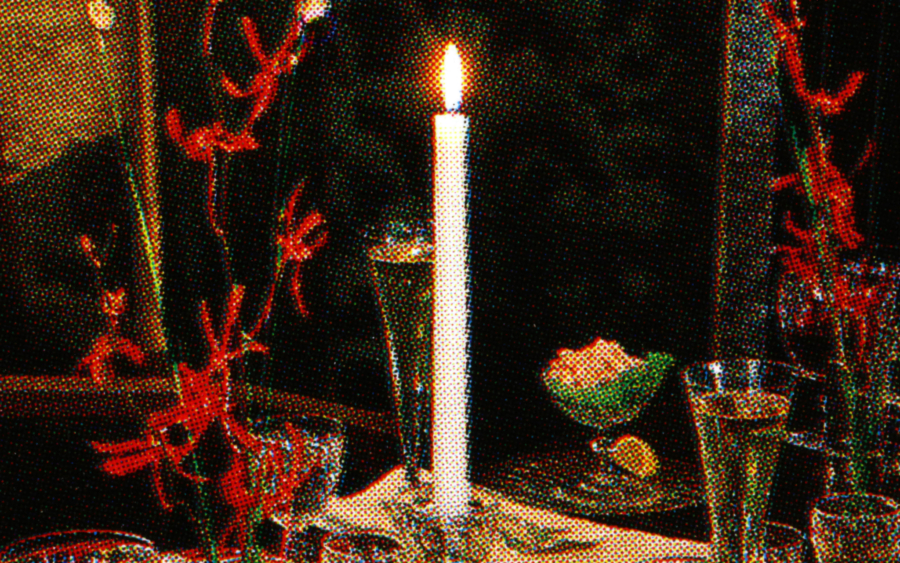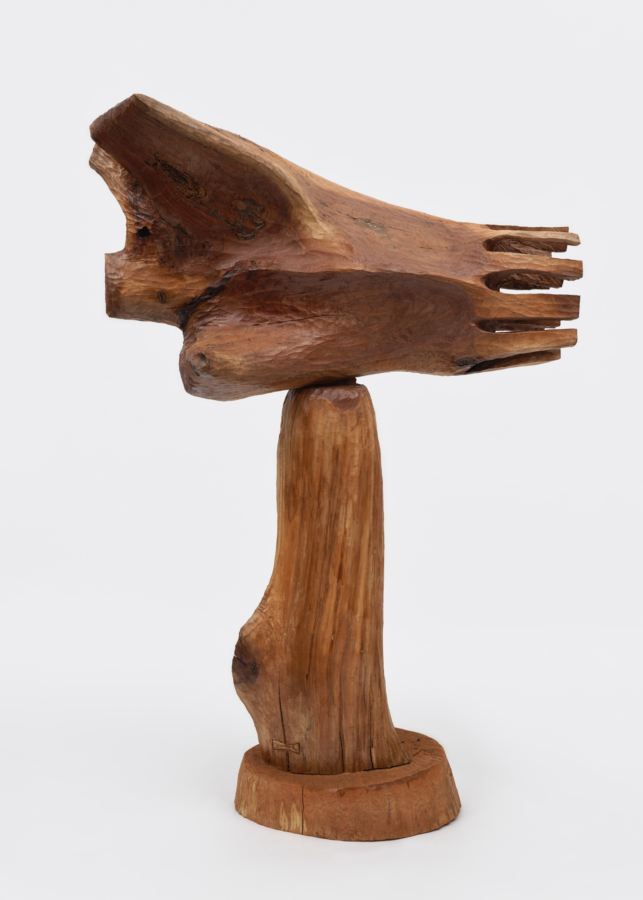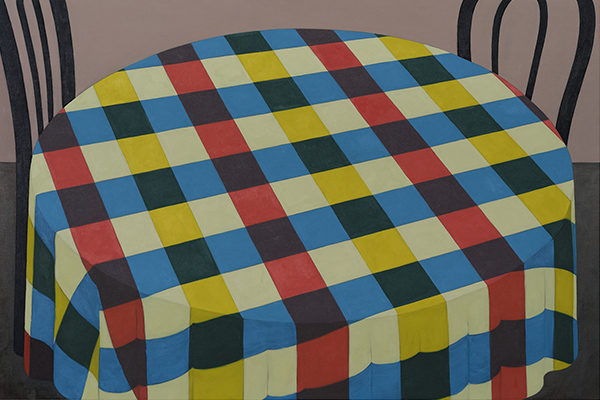
May 15, 2025
Passing through the sizzle and din of a city spring day, a woman enters a gallery in New York’s East Village. She spends time with abstract paintings, notices other visitors, walks close to the surface, and steps back; takes a spin around her memories of other paintings, other painters, other timelines. The gallery is Karma and the show is by Randy Wray, a Brooklyn-based painter and sculptor who has been active since the 1990s. The title of the show, Prehistory, could allude to the visual culture of Paleolithic cave art, but also to an era before written language and record keeping. The nine oil-on-linen paintings on view are composed in a way that mimics duff, the natural buildup that occurs on the floor of a forest. It’s a confusion that appears to follow the logic of decay and growth: the more you look, the more you can see.
Artwork titles like Bilateral, Sign, Tincture, and Mind-body (all 2023–2025) politely suggest a human trace. A fragment of a skull or a cross-section of a brain or other large organs can be glimpsed in the pale yellows and rust red of Interchange (2023–2025). In Visitant (2022–2025), a pea-green, pendulous orb set in a Veronese green background floats above what looks like a fossilised tree trunk sliced in half. The vertical height dominates in each painting, meaning that the canvases read as portraits rather than landscapes. The paintings, each in their own way, have the look of flattened biological specimens under a microscope, the round contours and jagged edges of an alien cell.
Like the work of two painters a generation older than Wray, Cora Cohen and Bill Jensen, these paintings are gently biomorphic and rely on a palette with subtle variations. It’s refreshing to see this combination: hermetic content juicily painted with a traditional oil-on-linen technique that respects the substrate of support and surface. The paintings are all framed in thin dark wood, further adding to a somewhat retro feeling of “good taste”, a mood that threatens to make the work more palatable than it perhaps wants to be.
Further down 2nd Street, Karma’s other gallery space showcases Wray’s smaller works on paper made in various combinations of charcoal, graphite, colour pencil, ink, crayon, and gouache. These drawings reflect the time and energy spent finding the forms and colour patterning that the artist later works out on a larger scale. The scrappier, scrawling handiwork that inflects these paper works are a welcome counterpoint to the oil paintings, which by comparison are still and solemnly composed.
When paintings such as these are so emphatically non-narrative, the viewer tries to navigate the pool of visual stimulation, simultaneously searching for signifiers and finding pleasure in the play of light and colour. The woman in the gallery watches out for what emerges from the painted surface: a bone-like protrusion, a piece of coral, a lotus blossom in a muddy field. Gradations of feeling and gradations of light, returning her to what is important in this reality: the presence of nature in the city, the hum of traffic in the distance, the intricate sensation that every moment brings, if you can only wake up to it.



